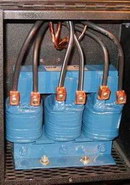jimmy2times
Electrical
I would like some assistance with selection of appropriate contactors (start and run) for a 440V, 83kW, 60Hz induction motor.
Unfortunately the details of the reactor are unavailable so not sure what the starting current would be limit to. The existing contactor details also unavailable other than old school arc chute type contactors.
I was looking to replace both (start and run) with modern day sealed contactors.
Would I be safe in selecting both contactors for the DOL duty, i.e. would the START contactor have sufficient short time withstand capability
Unfortunately the details of the reactor are unavailable so not sure what the starting current would be limit to. The existing contactor details also unavailable other than old school arc chute type contactors.
I was looking to replace both (start and run) with modern day sealed contactors.
Would I be safe in selecting both contactors for the DOL duty, i.e. would the START contactor have sufficient short time withstand capability


